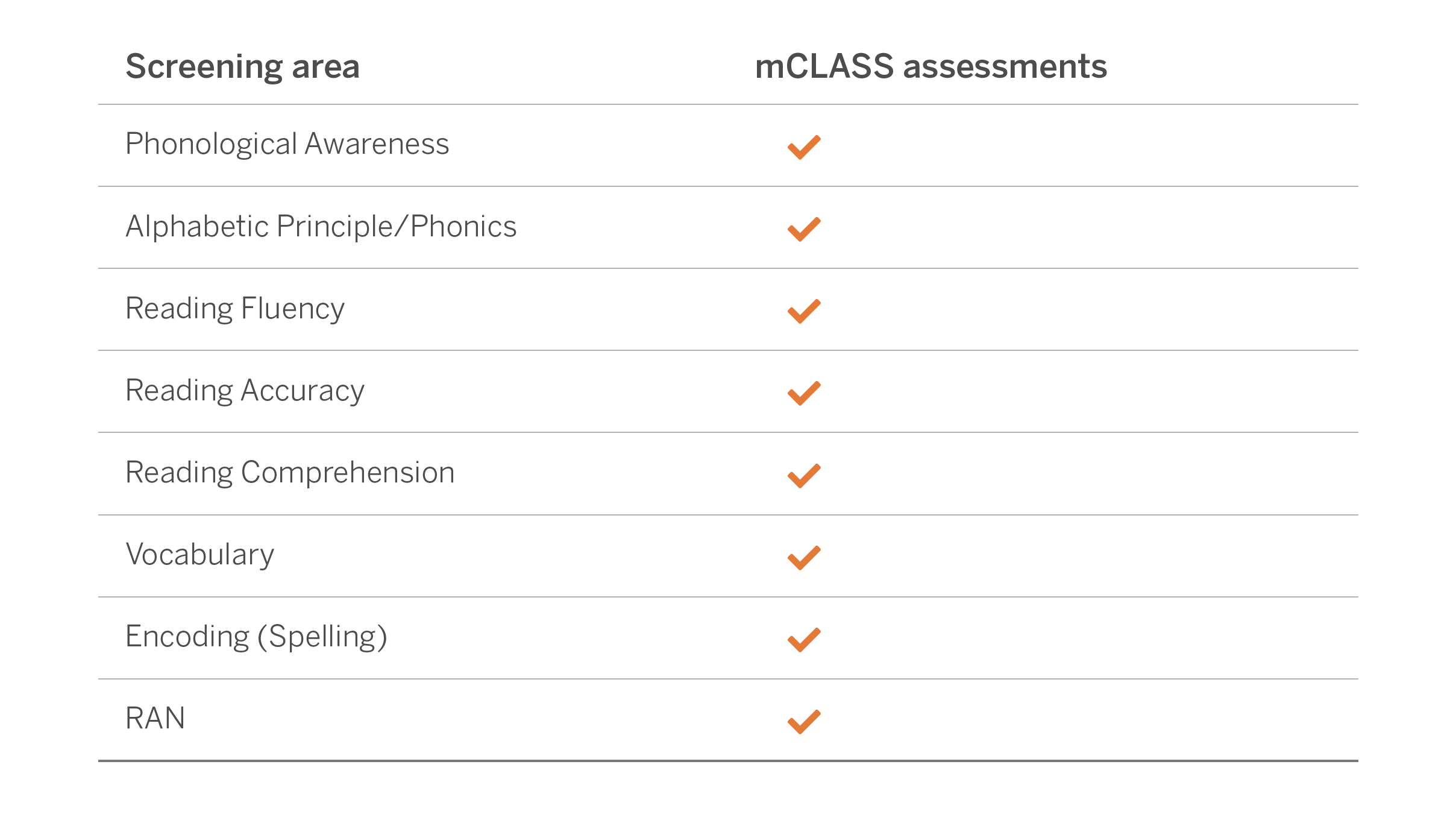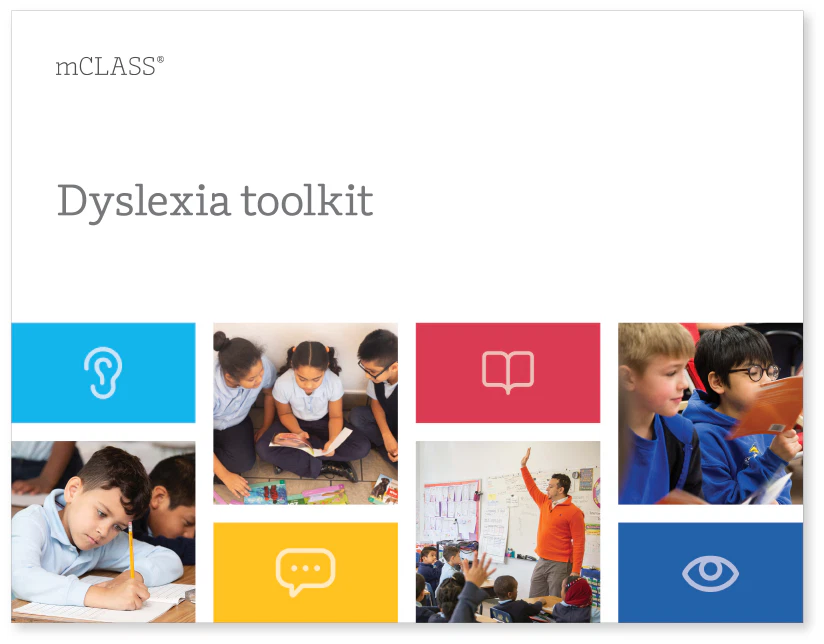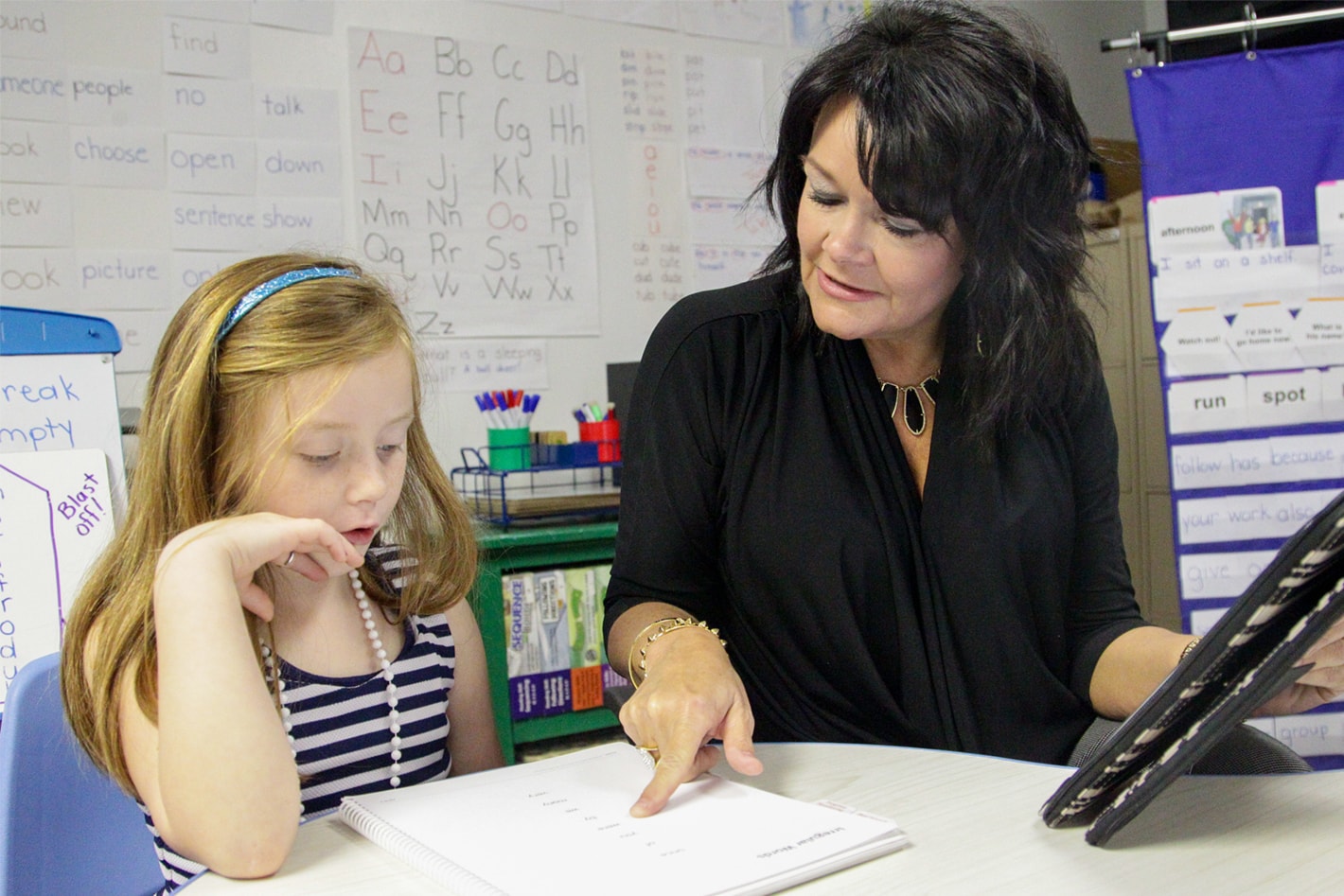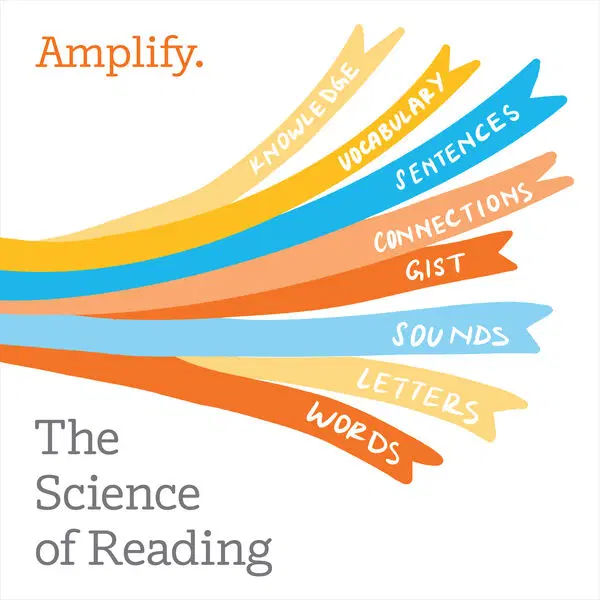Dyslexia: Early screening for risk
Dyslexia is one of the most common forms of learning disability, with some estimates suggesting that it may affect more than 17 percent of school-age students (Shaywitz, 2004). Although there are many different forms of reading difficulty, dyslexia is primarily characterized by difficulty in word-level reading ability, often due to deficits in automaticity or phonological processing.
Universal screening is an essential practice for identifying reading difficulties in the early grades, including characteristics of dyslexia. According to the International Dyslexia Association (IDA), early identification of reading difficulties helps get students the support they need and prevents further difficulty.

Amplify’s universal and dyslexia screening in one too
Measure what matters
mCLASS® with DIBELS 8th Edition® provides a formative assessment solution that supports the identification of students at risk for reading difficulties, including difficulty related to dyslexia. DIBELS 8th Edition was developed by the University of Oregon with the primary focus of ensuring that the measures are able to meet state-level dyslexia screening requirements.


How mCLASS identifies students at risk of dyslexia
When screening for risk, nothing can replace the power of listening to a child read—listening to their strengths as a reader AND their struggles.
With mCLASS, teachers administer predictive one-minute assessment measures that involve listening to students interact with sounds, letters, words, and text while screening for reading difficulties.
They will document all behaviors simultaneously on a mobile device. Accurate, efficient collection of data allows for immediate analysis that results in a clear identification of risk, not only for reading difficulty but also for dyslexia.
Research and statistics
mClass solutions

mCLASS Instruction
mCLASS Instruction provides teachers with a single view of the personalized, blended instruction (teacher-led and online) that is available to support individual student or small-group needs in skill areas directly assessed in the mCLASS assessment.
Employ teacher-led instruction for whole classes, small-groups, and individual students, including activities created by Susan Hall, author of I’ve DIBEL’d, Now What, are provided for skill practice.
Additional instructional resources for comprehension include grade-level passages that provide more practice.

Boost Reading
Get online student instruction and practice with Boost Reading, which places students in a personalized instruction path based on mCLASS assessment data and adapts based on progress in the curriculum. Students engage with skills-based games as well as an eReader.

mCLASS intervention
Receive rigorous, teacher-led intervention with mCLASS Intervention to address students most in need of support.

mCLASS Home Connect
Teachers can download a letter with student assessment results to send home to parents
and guardians, or use as a basis for discussion at conferences. Home Connect letters describe how the measures relate to skills development. Progress bars indicate the student’s performance on each measure.
Home Connect extends reporting to parents and guardians in a way that is easily understood and provides suggestions for positive action.
Request a demo
Simply complete the form to request a demo, and an Amplify sales representative will be in touch.




